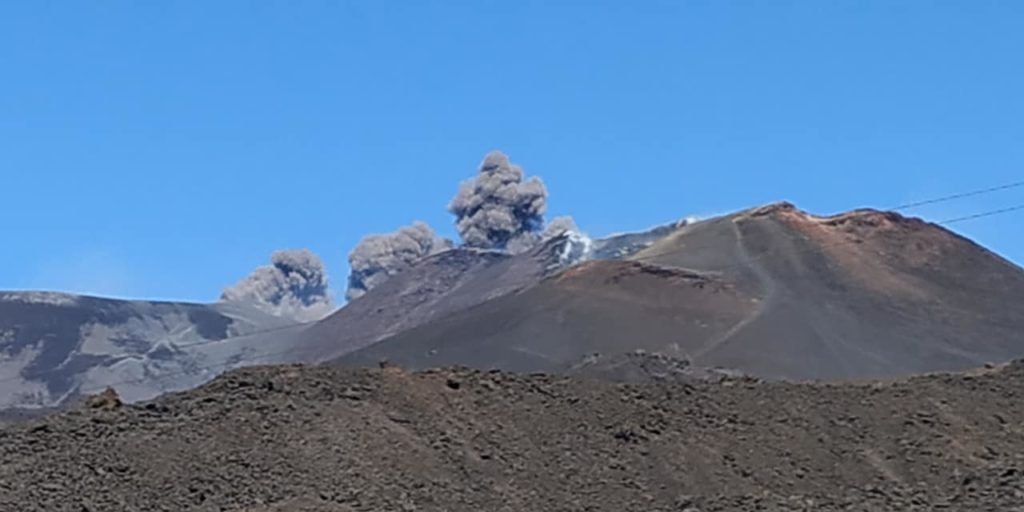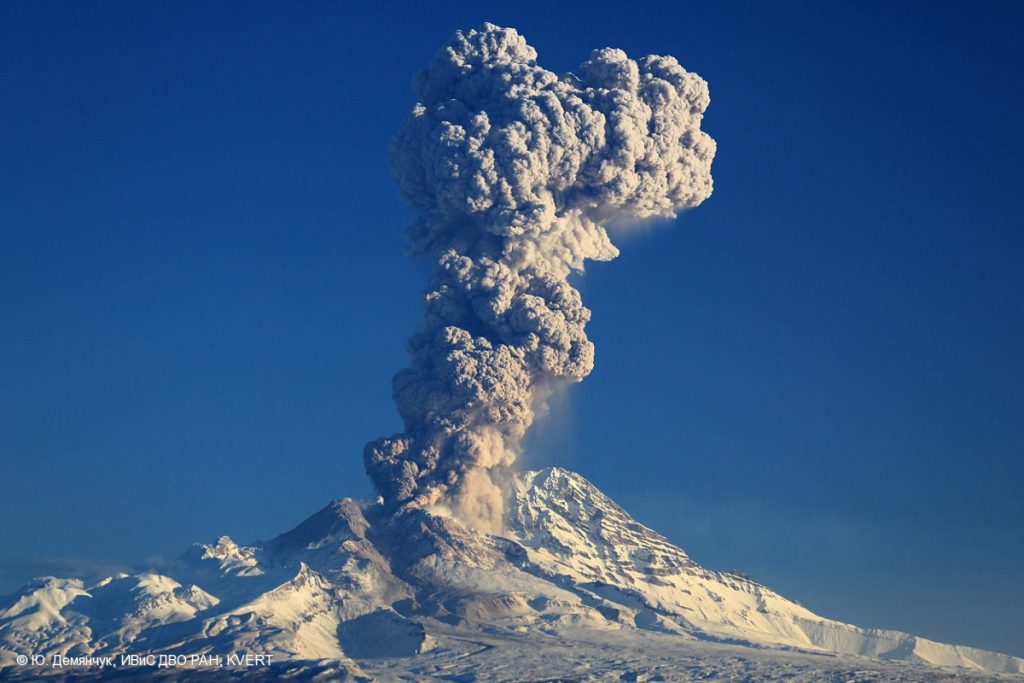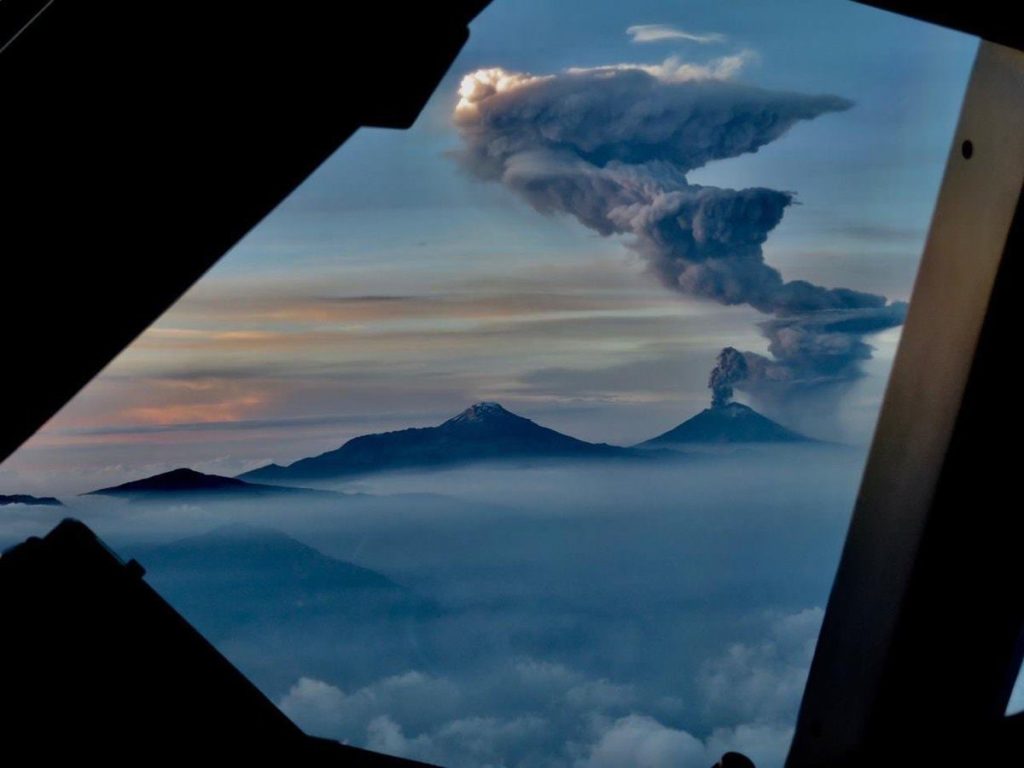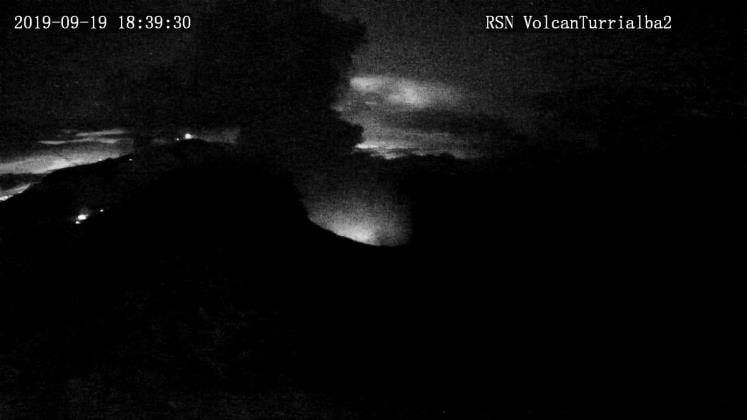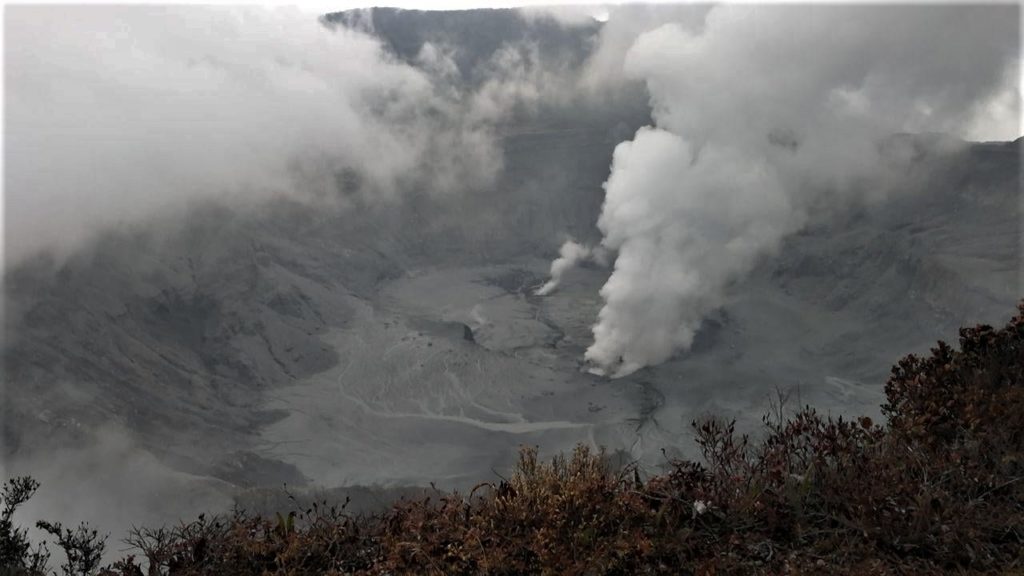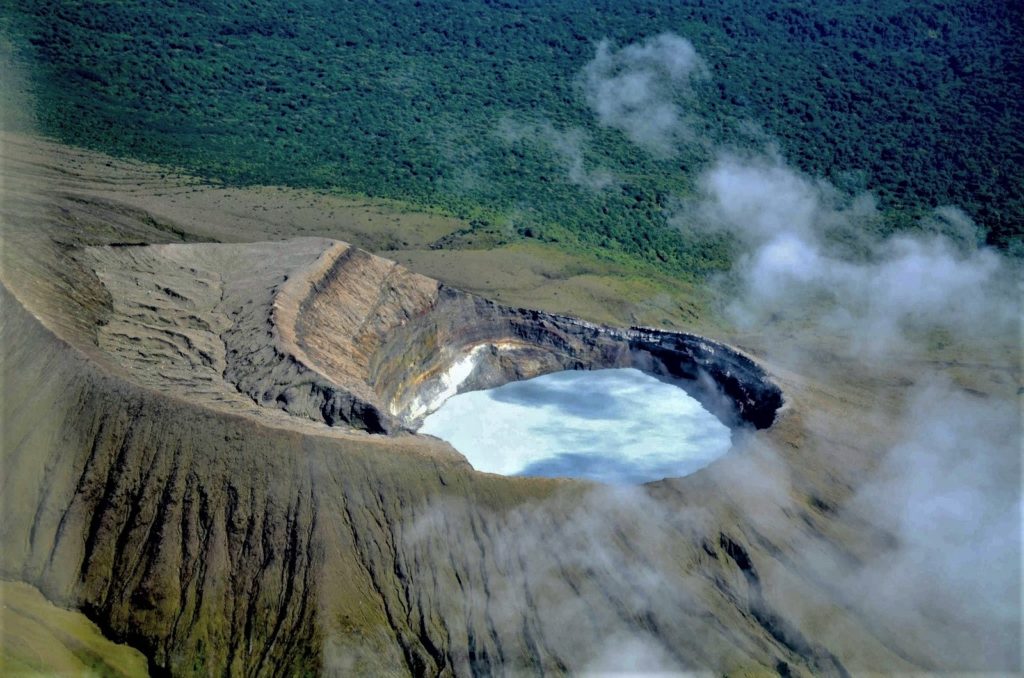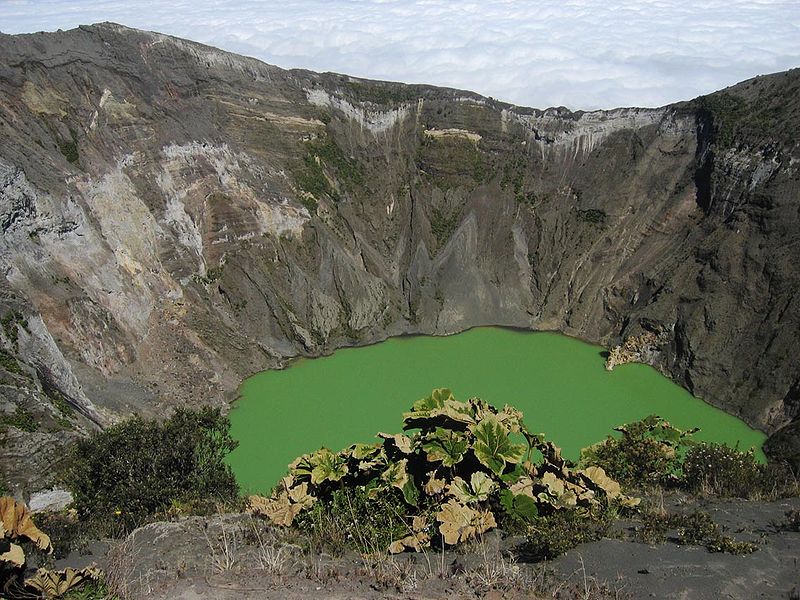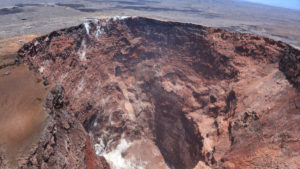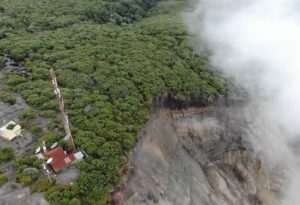October 06 , 2019.
Italy / Sicily , Etna :
COMMUNICATION on the volcanic activity of October 05, 2019 at 09:14:59 (UTC) – ETNA.
The National Institute of Geophysics and Volcanology, Osservatorio Etneo, announces that images from the network of surveillance cameras have shown a gradual intensification of ash emissions from the northeast crater during the morning. These emissions produce a diluted ash cloud that the high altitude wind disperses to the east. The magnitude of tremor is kept at medium values, without showing any significant changes.
Source : INGV.
Kamchatka , Sheveluch :
VOLCANO OBSERVATORY NOTICE FOR AVIATION (VONA).
Issued: October 06 , 2019
Volcano: Sheveluch (CAVW #300270)
Current aviation colour code: RED
Previous aviation colour code: orange
Source: KVERT
Notice Number: 2019-152
Volcano Location: N 56 deg 38 min E 161 deg 18 min
Area: Kamchatka, Russia
Summit Elevation: 10768.24 ft (3283 m), the dome elevation ~8200 ft (2500 m)
Volcanic Activity Summary:
According to satellite data, an ash cloude up to 10.0 km a.s.l. continues to drift to the north-east from the volcano.
Explosive-extrusive eruption of the volcano continues. Ash explosions up to 32,800-49,200 ft (10-15 km) a.s.l. could occur at any time. Ongoing activity could affect international and low-flying aircraft.
Volcanic cloud height:
32800 ft (10000 m) AMSL Time and method of ash plume/cloud height determination: 20191006/0300Z – Himawari-8
Other volcanic cloud information:
Distance of ash plume/cloud of the volcano: 267 mi (430 km)
Direction of drift of ash plume/cloud of the volcano: NE / azimuth 55 deg
Time and method of ash plume/cloud determination: 20191006/0300Z – Himawari-8
Source : Kvert.
Photo : Yu Demyanchuck , IVS FEB RAS , KVERT. ( 2014).
Mexico , Popocatepetl :
October 05, 11:00 am (October 05, 16:00 GMT)
According to the surveillance systems of the Popocatépetl volcano, 223 exhalations were identified, accompanied by gas and light amounts of ash. In addition, there were three minor explosions yesterday at 09:07, 10:08 and 11:46 and a moderate explosion today at 06:45 h. In addition, 366 minutes of tremor were recorded.
At the time of this report, there was partial visibility towards the volcano, any emission will be dispersed in the direction North-East.
CENAPRED urges NOT to approach the volcano and in particular the crater, because of the risk of falling ballistic fragments, and in case of heavy rains, to stay far from the bottom of the ravines because of the risk of mudslides and debris.
The warning light of Popocatépetl is in YELLOW PHASE 2.
Source : Cenapred .
Photo : piloto Jaime del Río , 18/06/2019.
Costa Rica , Turrialba / Poas / Rincon de la Vieja / Irazú :
Daily report of the state of volcanoes. OVSICORI-UNA
Turrialba Volcano:
No eruption is reported.
The seismic activity is similar to that of yesterday.
At the time of this report, the winds blow from the northeast.
Frequent long-period earthquakes, a 500-meter high vapor and gas plume, and a slight glow in the crater have been observed over the past 24 hours. The MultiGAS station recorded 11 ppm of SO2 on October 1 and only 0.17 ppm of SO2 today, October 2, due to a change of direction of the plume as well as traces of H2S, H2S / SO2 gas = 0.26.
Poas Volcano:
No eruption is reported.
The seismic activity is lower than yesterday.
At the time of this report, winds are blowing from the south.
The volcanic tremor ceased, but the long period type earthquakes are frequent. The plume of steam and gas is less vigorous. The Mirador SO2 gas monitor, ExpoGAS, records very little SO2 gas, less than 0.3 ppm, just like the MultiGAS sensor located on the western edge of the crater, only 0.57 ppm of SO2. Between 19 September and 1 October, the OVSICORI-UNA gas and aerosol monitoring station in Coronado / San José detected high SO2 concentrations in the ambient parts per billion) of gas emissions from the Poás volcano.
Rincon de la Vieja Volcano:
No eruption is reported.
The seismic activity is higher than yesterday.
At the time of writing, winds are blowing from the north.
On October 1 at 7:02 there was an exhalation column of particles of vapor, gas and acid about 500 m high. The seismic activity has increased, presenting volcanic tremors of short duration, but of greater amplitude than those recorded before the eruption of vapor and gas from the 1st of October in the morning. The height of the plume was between a few tens of meters and about 500 m. The Ojo de Agua Santuarium, 4 km north of the active crater, shows between mid-August and today waters with stable parameters, such as: a temperature between 31 and 32.5 degrees Celsius; conductivity around 1710 μS / cm; pH between 3.71 and 3.73, ORP around 1580 mV and heat flux density around -0.5 W / m2 at 60 cm depth.
Irazú Volcano:
No eruption is reported.
The seismic activity is similar to that of yesterday.
At the time of this report, the winds blow from the northeast.
The Irazú has an area with diffuse fumaroles at low temperature (between 80 and 93 degrees Celsius in the boiling point of water in the summit crater, 3300 m.). The changes in the chemical composition of these fumaroles are monitored almost in real time with a permanent MultiGAS system that has recorded, in the last 24 hours, more abundant gas concentrations: CO2 = 543 ppm and traces of H2S = 0.87 ppm (CO2 / H2S = 624).
Source : Ovsicori.
Photos : RSN , RSN , Federico Chavarría-Kopper – Ovsicori , Dirk van der Made -Wikipédia .

